Sally and I needed a break from weedeating and we escaped over Tioga Pass, camping along roaring Lee Vining Creek. Relaxing and reading were my goals but I walked back through history up to the Poole Hydroelectric Plant.
Where: Inyo National Forest, Aspen Campground
Elevation: 7,490′
Date: June 4-7, 2018
Maps: June Lake Topog
Dog Friendly? Yes
Sally and I headed out for a few days of camping at Aspen Campground in the Tioga Pass area. We headed east on Tioga Road, past the eastern entrance and down the Tioga Road to the Poole Powerplant Road, following the signs to Inyo National Forest’s Aspen Campground. The campground is at 7,490′ elevation and has 45 campsites. For more information there is a link at the bottom of this blog. The campground is located adjacent to Lee Vining Creek. The lower end of the campground is adjacent to a meadow, shaded by aspens and the upper end is in fir. Sally and I stayed at the upper end at site #25 for the week and it was a good campsite. It had plenty of room to set up my hammock next to the roaring (and unfishable) creek.
We didn’t have too far to walk down to the meadow along the creek. I tried a little fishing but didn’t get a bite and reports from others were equal to mine.
I hadn’t counted on this being a fishing trip anyway. I relaxed and did a ton of reading.
Sally was kept on leash in the campground but once we got outside of the campground and in the grassy meadow, she did some serious rolling.
On our short walks back and forth to the meadow, I spotted some flowers blooming.
I had never been up to the Poole Hydroelectric Plant so Sally and I talked it over and decided that we needed to walk up there. It was only a couple of miles on the road, so we headed out.
I was somewhat familiar with the Poole Hydroelectric Plant because it had a tie to Bodie. How you ask? Well, let me tell you a little story.
James Stuart Cain was born 1854 at Rockburn, Quebec, Canada and had immigrated to Carson City, Nevada when he was 21. He started working in a lumber mill in the Carson Valley that provided lumber to mines near Virginia City. He was a hard working man and soon had contracts to provide lumber to the Comstock Lode and a booming mining town named Bodie. He married Martha Delilah Wells in 1879 and they headed to Bodie.
Timber was in great demand. It was used for cooking and heating but it was also used for shoring up mines, building hoisting works, firing the wood-burning boilers for the steam engines, building homes and other structures.The Porter Lumber Company hired Cain to float lumber from Mono Mills on the south side of Mono Lake, load it onto wagons and haul it to Bodie. In 1879 the company bought a 5 ton steamboat in San Francisco and had it hauled to Mono Lake, putting it to work hauling barges of wood and lumber across the lake toward Bodie. In 1881, the Bodie Railway and Lumber Company came into the picture, with Cain and Thomas Holt purchasing it to haul wood.
During the 1880’s, through a partnership, he entered into a land lease where the Standard Mine sat. They struck it rich and took out $90,000 in 90 days. In 1890, Cain bought the Bodie Bank and invested in many other buildings and businesses in Bodie.
In 1892, the first long distance transmission of electrical power in the world was established south of Bridgeport at Green Creek. You heard that right–it was the first one in the world. The electricity ran from the Green Creek Hydroelectric Plant 13 miles to the Standard Mill in Bodie. He was able to stop using steam to operate the mill and use electricity.
So that brings us back around to the story about the Poole Hydroelectric Plant. Inspired by the success of the Green Creek Power Plant, Cain looked around for other sites. By 1903, he had started working on two sites, one at Sylvester Meadows on Lee Vining Creek and on Rush Creek. But by this time, Cain was not the only person who had visions of electricity being generated in Mono County. In 1907, his company California-Nevada Canal, Water and Power Company submitted an application to construct five irrigation reservoirs, along with numerous canals and flumes. These reservoirs included Gem, Agnew, Saddlebag, Rhinedollar (now known as Ellery) and Tioga Lakes. The permits were approved with the condition that the water could be used for electrical generation but had to be returned to the streams for irrigation.
By 1917, the California-Nevada Power Company had developed plans for construction of three power plants on Lee Vining Creek. Lee Vining #1 was the upper plant, designed to operate under a 1,700 foot head pressure with a single 10,000 kva generator. Lee Vining #2 was the middle plant designed to operate under 600 foot head and was never built. Lee Vining #3 was the smallest plant and designed to operate on 300 foot head. They also had plans to enlarge, deepen and dam Rhinedollar (Ellery) Lake. From that reservoir, a tunnel 1,800 feet was planned through solid rock to the penstock of Lee Vining #1.
Construction had been underway for several years when the Southern Sierras Power Company obtained the land and water rights in Mono County that were leased by J.S. Cain in 1923. The Lee Vining #1 Power Plant was completed in September 1924 and renamed after the death of Southern Sierras Power Company’s Chief Engineer, Charles Oscar Poole, at the age of 65.
When Sally and I arrived at the Poole Hydroelectric Plant, it looked like we stepped back into time. The buildings were well maintained from the outward appearances. I obeyed the No Trespassing signs and took my pictures from outside of the gate.
What was that up on the hill? It was an old log cabin? I had to try and learn a little more about the buildings at the Poole Hydroelectric Plan and located a wonderful site with many pictures here. From that site, I discovered that the building in the left side of the picture is the triplex cottage at Poole Powerhouse and was designed by G. Stanley Wilson who is recognized as one of California’s master architects during the 1920 and 1930s. It was built about 1924. The site stated that Wilson was a leading practitioner of the Spanish-Colonial revival style during the 1920s and he worked mainly in Southern California and designed several buildings in the Riverside area that are listed on the National Register of Historic Places.
I couldn’t obtain any information about the cabin but have not given up trying. If anyone can enlighten me, please let me know. From pictures, it appears that it was there in 1924 and probably before that.
Now that I had learned a bit more of the history, I realized that this Pelton Wheel was put in service at the very beginning of the powerhouse’s service. How fantastic that they mounted this for us to see and appreciate what it took to get to today’s use of the water that comes down Lee Vining Creek and the power that it generates.
Dog Hike?
The Inyo National Forest has a great 1 page document called Hiking and Camping with Dogs and if you have trouble accessing the PDF link, you can click or save the below.
Map, Doarama and Profile:
Where: Inyo National Forest, Aspen Campground
Distance: 4.09 Miles
Difficulty: Easy
Elevation Range: 7,520′ – 7,927′
Date: June 6, 2018
Maps: June Lake Topog
Dog Hike? Yes but watch for cars on the road
The GPS did a bit of guessing in the tight canyon but still wanted to share with you so you could get a feel for the country. From the Doarama, you can also spot sections of the old Tioga Road before it was realigned as we know it today.
Aspen Campground to Poole Hydroelectric Plant Doarama
Sources:
Inyo National Forest Dog Hiking & Camping with Dogs
Historic Overview of the Rush Creek and Lee Vining Hydroelectric Projects
Charles Oscar Poole Google Books Journal of Electricity, Power and Gas

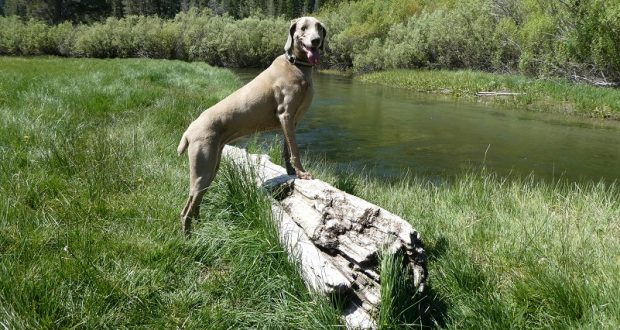
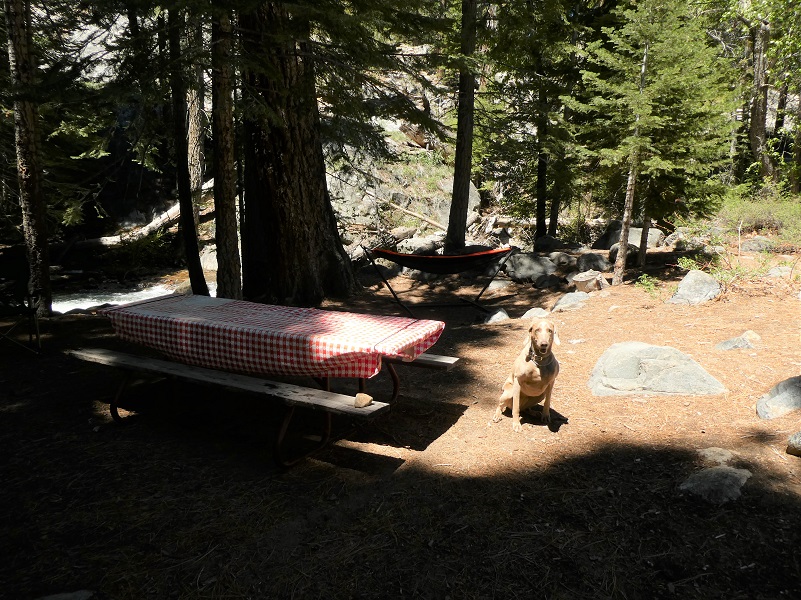
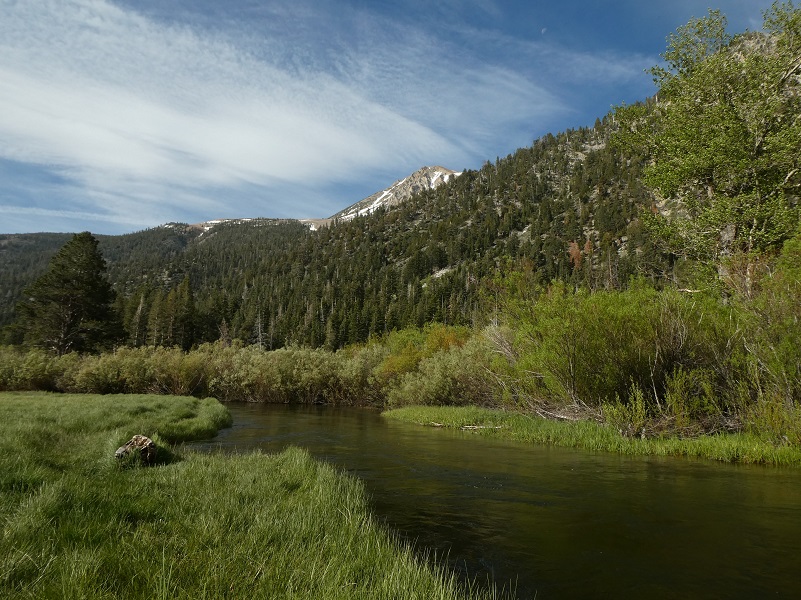
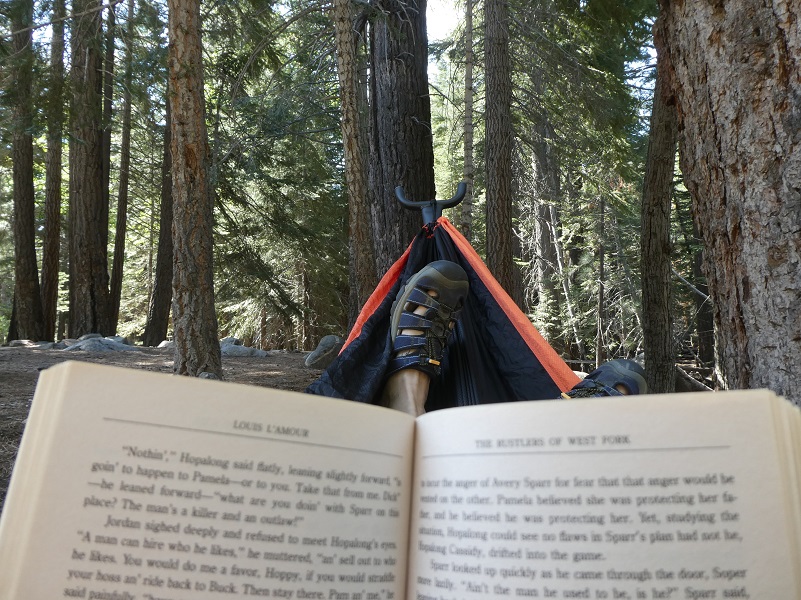
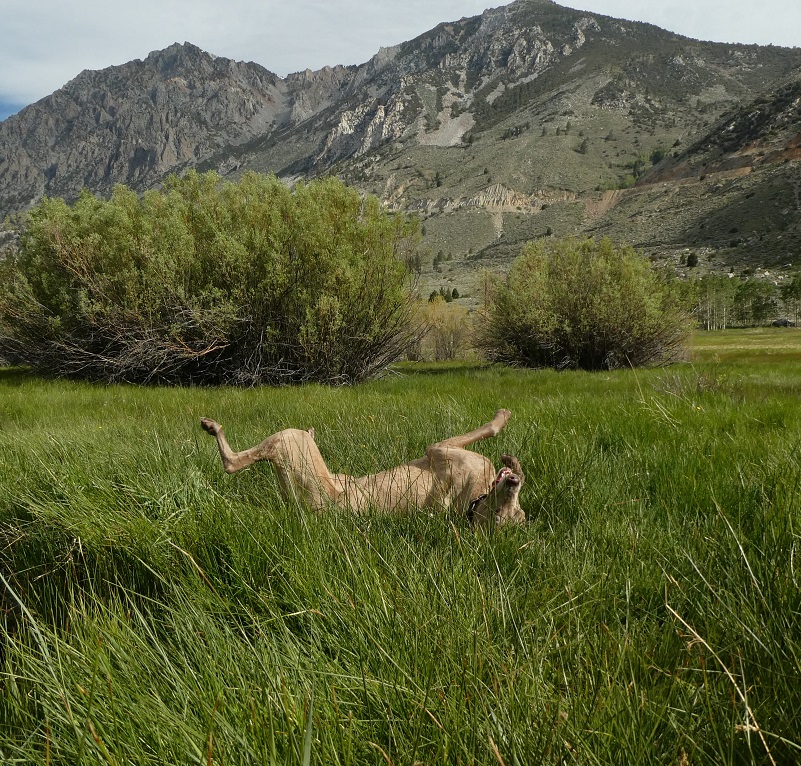
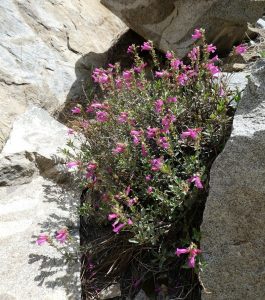
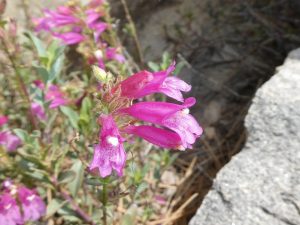
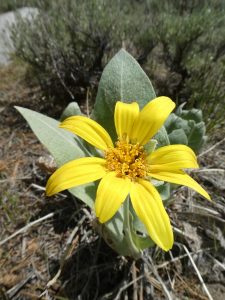
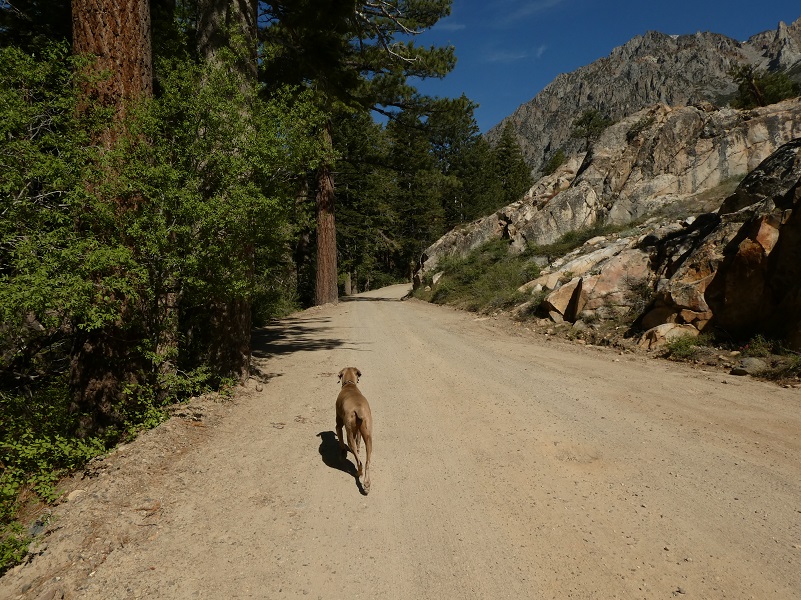
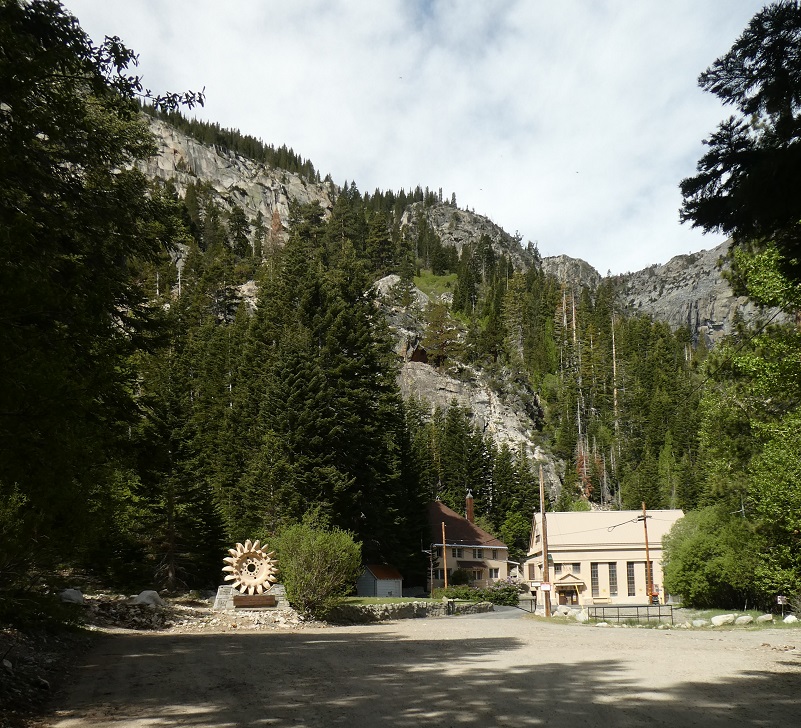

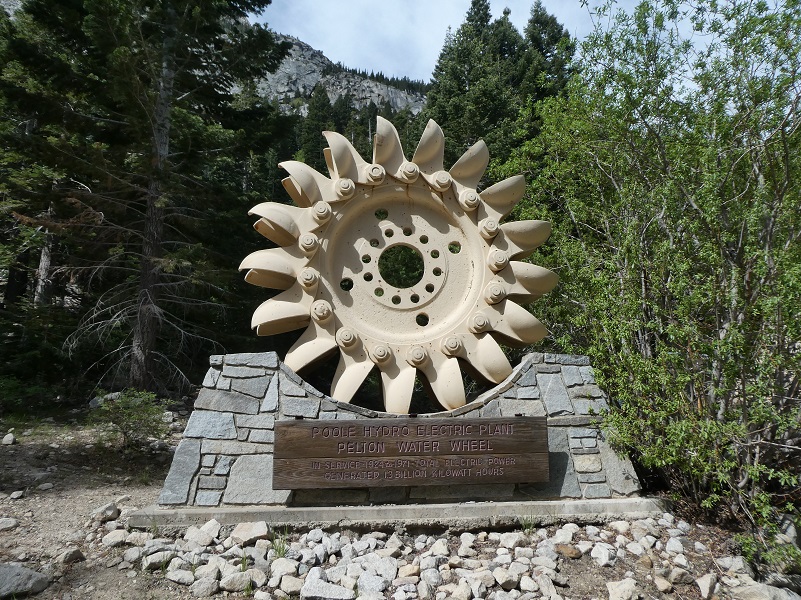

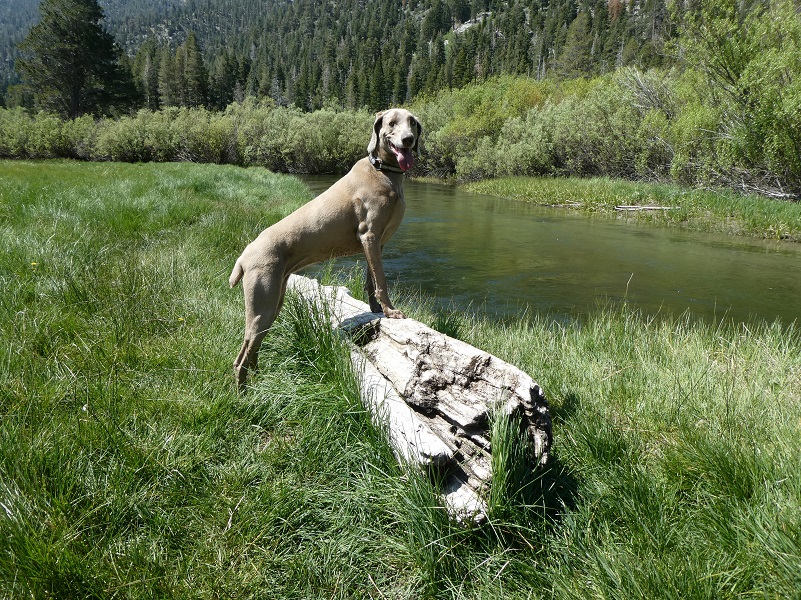

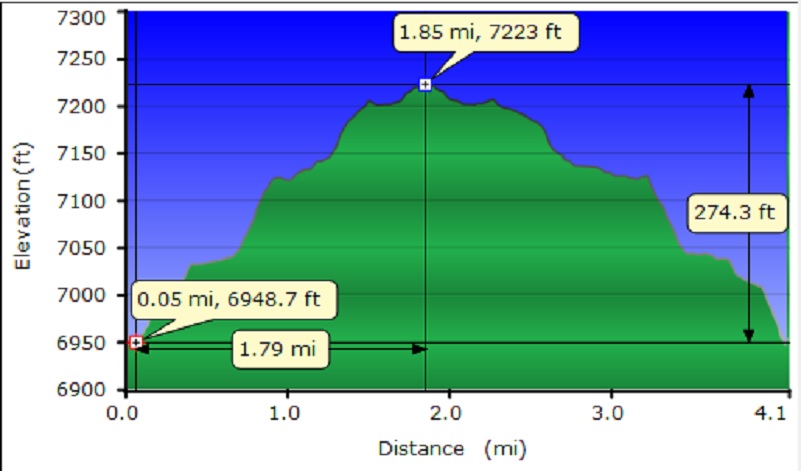

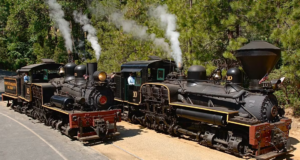

Hello, I lived at Poole Plant as a child (1979/1980). There was no TV reception and my school bus stop was at the ranger station. My father was a hydroelectric operator. He thinks the cabin was a shelter for the hydrographers who would measure water levels. It’s also possible there’s a penstock up there and the controls were in the cabin. This predates the building of the house and probably the powerhouse as it stands today. It was so long ago so memories have faded. We lived upstairs in the house (the west apartment). There was a tunnel that led from the house to the powerhouse so if we were snowed in, the operator could still get to work. My brother and I used to climb that water wheel. It was isolated but since we were kids we had fun playing outside.
Thank you for sharing these wonderful memories with us BrianL. What an amazing adventure you and your family had then.